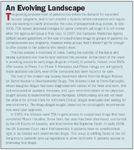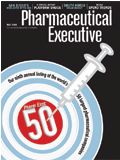Boundaries of Expanded Access
Pharmaceutical Executive
More patients are demanding drugs--and showing up everywhere form YouTube to the Supreme Court. But to offer access to investigational drugs, companies first need to know the rules
Often, patients with critical or life-threatening illnesses don't qualify for clinical trials. Some are just too sick. Or perhaps their previous medical treatment disqualifies them for the study. Whatever the reason, for many of these patients the wait for drug approval is too long.

Simon Estcourt
Recognizing this situation, governments around the world have established special regulations that allow patients with unmet medical needs—who have exhausted all available treatment options—to obtain drugs prior to their market launch.
Certainly, there is a humanitarian motivation for offering these expanded access programs (EAPs). They were started in the United States more than 30 years ago as a way to give cancer patients access to drugs that were not yet on the market. In 1987, FDA expanded and codified these guidelines, allowing greater access to drugs in development, like HIV/AIDS treatments. Today, patients are pushing the envelope and growing increasingly empowered to demand investigational drugs. For instance, Connie Loughman is a housewife who recently garnered national attention through a YouTube spot she created, advocating access to a pancreatic cancer treatment for herself and fellow patient Patrick Swayze.

An Evolving Landscape
The humanitarian motivation for providing preapproval access is to legally and ethically respond to the needs of desperately ill patients. At the same time, companies need to be aware that these programs create increased visibility for drugs still in development.
Pharmaceutical companies wishing to expand access to investigational drugs need to be aware of the regulatory guidelines that govern these programs and their promotion—or face stiff penalties and fines. This article provides an overview and offers vital information on the regulatory "do's and don'ts" of expanded access programs.
Program Options
Expanded access programs operate under stringent regulations that include guidance on who can request a drug, the process by which the drug is accessed, and the type of data that must be collected from participating patients. In the United States, these programs are defined and enforced by FDA. For patients outside the US, the programs are commonly referred to as named patient programs, and the rules are established and governed by local health and regulatory authorities.
Expanded Access Programs There are several types of FDA-sanctioned EAPs, including treatment protocols, treatment INDs, and single-patient INDs—all of which provide patients who would not otherwise qualify for clinical trials access to investigational drugs. FDA allows all US-based expanded access programs to collect safety and efficacy information.
To create a treatment protocol, a drug company must submit a formal addendum to FDA for an active clinical trial. In that addendum, the company defines the criteria for patient access to the investigational treatment. Then physicians contact the sponsoring company to request that their patient be included in the treatment protocol.
By contrast, in both treatment INDs and single-patient INDs, physicians drive the request to FDA to allow individual patients access to investigational drugs on an emergency or compassionate basis. They do this by submitting to FDA an application that includes scientific evidence supporting the use of the drug in the particular indication, as well as assurances that all informed consent requirements have been met, that the relevant institutional review board (IRB) has approved the request, and that the company agrees to release the drug. FDA may deny the request based on concerns for the safety of the patient.
The pharmaceutical company must agree to the request; FDA does not have the power to compel a company to release a drug for an unapproved use.
Named Patient Programs Named patient programs (NPPs) are similar to US-based EAPs, but with an international component—named patient programs enable physicians and patients to access medicines approved in other countries before marketing approval has been granted in their home country. Many companies typically establish named patient programs to allow patients in clinical trials to continue to access a drug after the trial ends, but prior to marketing authorization.
To gain access to this program, foreign physicians or pharmacists contact the company, or their NPP provider, on behalf of individual or "named" patients. If the patient meets the treatment criteria and all export and import requirements have been met, the drug is shipped to the patient's pharmacist and dispensed to the patient.
Know the Regulations
Expanded access programs provide significant benefit to critically ill patients. These programs can also benefit manufacturers by creating early visibility for a new product, and initiating physician and pharmacist engagement with a drug before it launches.
The possibility of a head start in gaining market acceptance for a therapy prior to launch can be particularly attractive for companies. However, whether governed by FDA or another regulatory body, the pharmaceutical industry must remain within the boundaries of the regulations governing pre-launch activity, and cannot actively promote these compassionate use programs.
What does that mean? As an overarching principle, companies can only respond to physicians' unsolicited requests for more information—which are often asked at medical conferences and in response to news of a company's late-stage trial. A few companies have also decided to post press releases announcing availability of their products via these programs—although others have shied away from that activity.
Solicitation of interest from target physicians, advocacy groups, or patients, however, is not allowed. Companies can't run advertisements, for example, or have their sales force promote expanded access programs. Crossing this promotional line could result in stiff penalties and negative publicity.
In the end, the growing power of patients means the demand for expanded access programs will only increase. To make the most of the humanitarian and market development benefits, companies must be familiar with expanded access options, the nuances of each, and where those boundaries begin and end.
Simon Estcourt is the global market access director of IDIS. He can be reached at sestcourt@idispharma.com
Benefit from industry updates and case studies related to this article at the 5th Annual Congress on Access Programs for Investigational and Pre-Launch Drugs, July 19-20, 2012, Philadelphia, PAcbinet.com/conference/pc12193

FDA Outlines Updated Requirement for Placebo-Controlled Trials in Vaccine Research
May 21st 2025In an article recently published by The New England Journal of Medicine, FDA higher-ups Vinay Prasad, MD, MPH; and Martin A. Makary, MD, MPH, wrote that any new COVID-19 vaccine must now be evaluated in placebo-controlled studies.
Addressing Disparities in Psoriasis Trials: Takeda's Strategies for Inclusivity in Clinical Research
April 14th 2025LaShell Robinson, Head of Global Feasibility and Trial Equity at Takeda, speaks about the company's strategies to engage patients in underrepresented populations in its phase III psoriasis trials.
Beyond the Prescription: Pharma's Role in Digital Health Conversations
April 1st 2025Join us for an insightful conversation with Jennifer Harakal, Head of Regulatory Affairs at Canopy Life Sciences, as we unpack the evolving intersection of social media and healthcare decisions. Discover how pharmaceutical companies can navigate regulatory challenges while meaningfully engaging with consumers in digital spaces. Jennifer shares expert strategies for responsible marketing, working with influencers, and creating educational content that bridges the gap between patients and healthcare providers. A must-listen for pharma marketers looking to build trust and compliance in today's social media landscape.